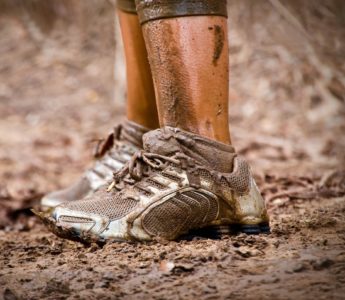 Trench foot is a condition that occurs when a foot is exposed to water and wetness for a prolonged period of time. The condition gets its name from World War I, as a number of soldiers developed the problem after being exposed to wet and damp conditions “in the trenches.”
Trench foot is a condition that occurs when a foot is exposed to water and wetness for a prolonged period of time. The condition gets its name from World War I, as a number of soldiers developed the problem after being exposed to wet and damp conditions “in the trenches.”
Although you aren’t likely to develop trench foot in a similar manner, it can still develop in people who spend a lot of time outdoors without taking proper precautions. For example, hunters and campers are at an elevated risk for trench foot because they can’t always air out their feet after they get wet. Today, we take a closer look at the condition, and we explain how you can prevent and treat trench foot.
Trench Foot Causes and Symptoms
Trench foot is a condition that causes problems with the muscles, nerves and skin in the feet. The problem develops when your feet are exposed to cold, damp and wet conditions for a long period of time. This consistent wetness damages the tiny blood vessels tasked with bringing nutrients and healthy blood to your feet, which leads to tissue damage. Left untreated, trench foot can lead to long term foot swelling and even the loss of your foot. It’s also worth noting that there’s no cure for the condition once the damage has set in, so early treatment and prevention is essential.
Symptoms of trench foot include:
- Swelling
- Cramping
- Numbness
- Skin sheering
- Discolored/Blanched skin
- Blisters
Trench Foot Treatment And Prevention
So if you’re heading off on a multi-day hike, a weekend hunting trip or will be camping for a week, make sure you plan ahead so that your feet don’t suffer. Treatment and prevention go hand in hand, so here are a number of different tips to consider. Although they will not apply for every situation, the main point is to plan ahead so that you will be able to keep your feet and footwear dry.
- Pack extra socks to swap out in case they get wet.
- Pack newspaper or paper towels to stuff into your shoes to help absorb wetness when not in use.
- Dry your feet with a towel after activity and allow them time to breath (no socks).
- While airing out your feet, lie down as it helps with circulation.
- Wear warm clothes, as staying warm helps promote circulation to your extremities.
- Flex the muscles in your foot when airing them out to help promote blood flow in the area.
- Pack extra boots or a boot dryer to ensure your footwear stays as dry as possible.
- Inspect equipment like boots, waders and shoes for holes that could allow water into the area.
- If your feet have been exposed to cold water, soak your feet in warm water for five minutes before letting them air dry.
If you are experiencing extreme discoloration, bleeding or excessive swelling after having your feet exposed to wet conditions for an extended period of time, head in to see a foot specialist right away to help minimize the damage.